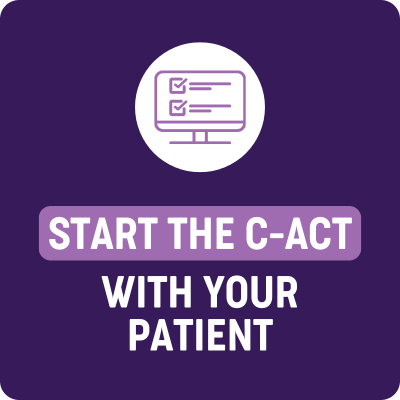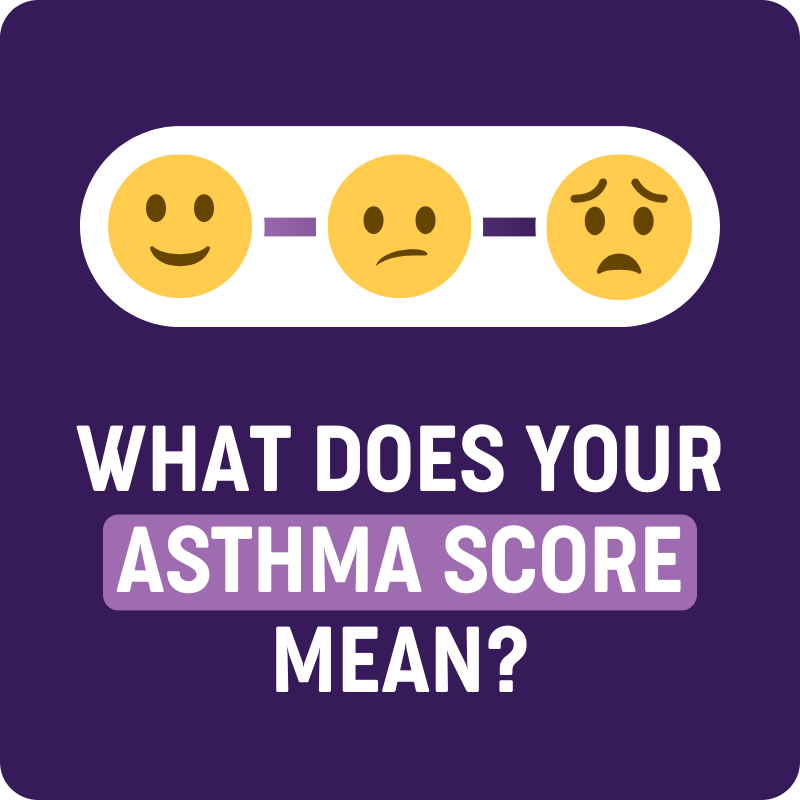UNDERSTANDING YOUR PATIENTS’ ASTHMA CONTROL WITH THE CHILDHOOD ASTHMA CONTROL TEST (C-ACT)
As a healthcare professional, you understand the importance of effective asthma management. The Childhood Asthma Control Test (C-ACT) is a valuable tool that can help you assess how well your paediatric patients’ asthma is under control.
WHY USE THE C-ACT?
The C-ACT is a validated test for children aged 4-11 years that can provide you with valuable insights into your patient’s asthma symptoms and their overall control. It is a recognised clinical asthma symptom measurement tool in Australia and internationally {Liu, 2010 #2414}. Asthma Australia has been granted the licence to use the test as part of our support for children and their families with their asthma and have developed this online tool
The C-ACT can be completed by patients in the consultation with you or in the waiting room in just a few minutes. After completing the test on our website, the score and category will be provided on the screen to inform the next steps in your consult.
If you want to send the results to the patient’s parent/caregiver, then you can ask them to complete their details. They will receive a copy of their responses, the C-ACT result, and some supporting information about managing symptoms and triggers.
INTERPRETING C-ACT RESULTS
The C-ACT consists of seven questions with four questions completed by the child and three questions by their parent or caregiver. It covers common asthma symptoms and their impact on daily life and play over the past four weeks. The tool automatically calculates the result. Based on the score the patients’ asthma can be categorised as within the target range and well-controlled, or outside the target range and not well-controlled, or very poorly controlled.
TARGET RANGE
20-27: WELL CONTROLLED
This suggests the child’s asthma is well-managed. However, regular review and monitoring remain essential.
OUTSIDE THE TARGET RANGE
13-19: NOT WELL CONTROLLED
This indicates that the child’s asthma is not adequately controlled, and adjustments to their management plan may be necessary.
Further assessment and potential treatment escalation should be considered with a follow up planned to assess future control.
Consider any barriers to taking prescribed medicines, technique and trigger reduction strategies.
0-12: VERY POORLY CONTROLLED
This signifies that the child’s asthma is very poorly controlled, they are likely experiencing frequent symptoms, significant limitations and an increased likelihood of a severe asthma attack.
Urgent review and interventions are crucial.
Consider any barriers to taking prescribed medicines, technique and trigger reduction strategies.
DISCUSS C-ACT RESULTS WITH PATIENTS and parents
Once you have reviewed your patients’ C-ACT results, discuss them with the child and their parent or caregiver during their appointment. This will allow you to address any concerns they may have and work together to develop a treatment plan that is right for the family.
We provide information about how to interpret the score for patients here.
By repeating the C-ACT regularly, you can identify potential problems early on, improve communication with your patients, and empower them to take control of their asthma management.
If you would like your patient’s family to receive more information and support with their asthma self-management, please refer them for a consult with our Asthma Educators.
Asthma Scoring Tools are not intended to be used by members of the public in place of health professional advice.
For more information on the Childhood Asthma Control Test, you can contact us on 1800 ASTHMA (1800 278 462)
TERMS OF USE
Validation of the Childhood Asthma Control Test
The Childhood Asthma Control Test (C-ACT) is a validated tool for assessing asthma control in children aged 4–11 years. It consists of seven items: three for the parent/carer (about the child’s symptoms over the previous four weeks) and four for the child. A lower score indicates worse asthma control. The C-ACT has been shown to be effective in identifying both controlled and uncontrolled asthma.
The author and copyright holder are GlaxoSmithKline Research & Development Limited (GSK). Asthma Australia has been granted the licence to use the test as part of our support for children and their families with their asthma.
Reference:
Liu, A. H., Zeiger, R. S., Sorkness, C. A., Ostrom, N. K., Chipps, B. E., Rosa, K., Watson, M. E., Kaplan, M. S., Meurer, J. R., Mahr, T. A., Blaiss, M. S., Piault-Louis, E., & McDonald, J. (2010). The Childhood Asthma Control Test: retrospective determination and clinical validation of a cut point to identify children with very poorly controlled asthma. J Allergy Clin Immunol, 126(2), 267-273, 273.e261. https://doi.org/10.1016/j.jaci.2010.05.031





 1800 278 462
1800 278 462
